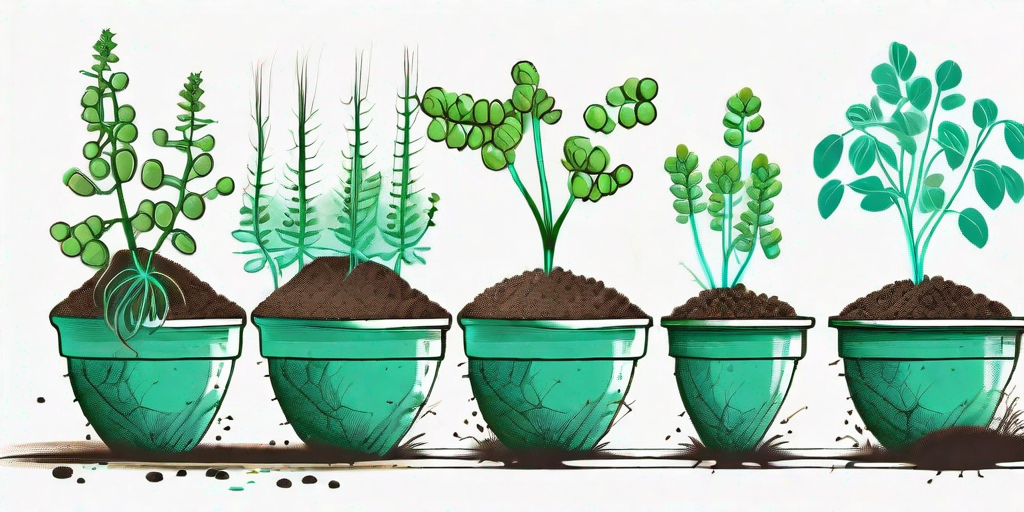
Ever wondered how to turn those tiny, hard chickpeas into a lush, green plant? Well, you're in luck! This guide will take you through the journey of a chickpea, from a humble seed to a sprouting plant. And the best part? You can do it all from the comfort of your own home. So, put on your gardening gloves, and let's get started!
Understanding the Chickpea Plant
Before we dive into the planting process, let's take a moment to appreciate the chickpea plant. Also known as garbanzo beans, chickpeas are a type of legume that's been cultivated for over 7,000 years. They're not just tasty, but also packed with protein, fiber, and several key vitamins and minerals.
Chickpea plants are relatively easy to grow, making them a great choice for beginners. They thrive in warm weather and require well-drained soil. The plants grow to about 20-25 inches tall and produce pods, each containing one or two chickpea seeds. Now that's a plant that doesn't mess around!
Getting Started: What You'll Need
Ready to embark on your chickpea growing journey? Here's what you'll need:
- Chickpea seeds
- A pot or garden plot
- Well-drained soil
- Water
- Sunlight
- Patience (lots of it!)
Once you've gathered your supplies, it's time to get your hands dirty!
Planting Your Chickpeas
Step 1: Preparing the Seeds
Start by soaking your chickpea seeds in water for 12-24 hours. This will soften the seeds and speed up the germination process. After soaking, drain the water and let the seeds dry. Now, they're ready to be planted.
Step 2: Preparing the Soil
Chickpeas prefer well-drained soil with a pH between 6.0 and 7.5. If you're planting in a pot, make sure it has drainage holes to prevent waterlogging. Fill the pot with soil, leaving about an inch of space from the top.
Step 3: Planting the Seeds
Now, the moment you've been waiting for! Plant the chickpea seeds about 1-2 inches deep and 3-4 inches apart. Cover the seeds with soil and water thoroughly.
Caring for Your Chickpea Plants
Now that your seeds are planted, it's time to sit back and let nature do its thing, right? Not quite. Chickpea plants need regular care to thrive.
Watering
Water your chickpea plants regularly, but be careful not to overwater. The soil should be moist, not soggy. Overwatering can lead to root rot, which is as nasty as it sounds.
Sunlight
Chickpea plants love the sun. They need at least 6 hours of direct sunlight each day. So, make sure your plants are in a sunny spot, whether it's on your windowsill or in your backyard.
Fertilizing
Chickpeas are self-fertilizing, which means they don't need additional fertilizer. In fact, adding fertilizer can harm the plants. So, save your money and let the chickpeas do their thing!
Harvesting Your Chickpeas
After about 100 days, your chickpea plants will be ready to harvest. The pods will turn brown and dry, and the seeds inside will rattle when shaken. To harvest, simply pick the pods and remove the seeds. Congratulations, you've just grown your own chickpeas!
FAQs
- Can I grow chickpeas indoors?
- Yes, chickpeas can be grown indoors as long as they get enough sunlight.
- How long does it take to grow chickpeas?
- Chickpeas take about 100 days to grow from seed to harvest.
- Do chickpeas need a lot of water?
- Chickpeas need regular watering, but the soil should not be soggy. Overwatering can lead to root rot.
Conclusion
And there you have it, a comprehensive guide to growing chickpeas at home. With a bit of patience and care, you can turn a handful of seeds into a thriving chickpea plant. So, why not give it a try? You might just find that growing chickpeas is as satisfying as eating them!











